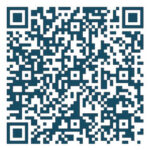In 2025, both Israel and the United States dropped bombs on Iran for its nuclear ambitions, its support of terrorism, its arrest, torture and murder of journalists. Meanwhile, Iranian women continue to protest the rigid rules of dress and behavior following the 2022 death of Mahsa Amini for wearing her hijab improperly. This memoir of more than two decades ago explores the reality of life in the Islamic republic and juxtaposes it to the timeless messages to be found in classics of 19th and 20th C English fiction.

The Iranian-American author, Azar Nafisi (b. 1955), reminisces about her experiences teaching English literature in Iran before, during and after the revolution and the Iran-Iraq war (1980-1988). The book opens near the end of her sojourn in Tehran. A small group of young women, who have been friends since they were University students, gather in the author’s home to read and discuss English novels. They wear western clothes, remove their veils, and eat sweets. Some have been in prison. They conceal their simple purpose from fathers, husbands, brothers, because meeting to read Western fiction would be construed as an act of defiance.
In four sections, two named for twentieth-century novels and two for nineteenth-century authors — “Lolita” “Gatsby” “James” and “Austen,” Nafisi constructs a series of flashbacks that describe the events of late 1970s to the 1990s in the inner and outer world of an academic woman. The books and writers used in the section headings have walk-on parts or starring roles that jar in this ostensibly alien context. Yet, they work surprisingly well for the women students, stimulating them to think in new ways about the situation in which they find themselves. Conversely, as the students assimilate the English and American writers into their world, we learn more about their Iran.
Myriad details of moment, garb, color, and food, evoke the everyday “feel” of protests and atrocities that are known in the West only through journalist’s reports. The long descriptions contrast sharply with a relentless and probably deliberate lack of precision about several basic things. For example, the author withholds her age and the identity and the nature of her relationship with “my magician,” a greatly admired man –perhaps a lover or a teacher–who seems to exist on chocolate and philosophy.
Possessives and the first-person singular are used liberally (“my students”) to remind us that this is one woman’s story—notwithstanding the solace, but barely developed presence, of a husband, two children, and a mother. The decision may have been made to protect personal privacy. But the result also conspires to build a narcissistic tone, as if the author marvels at her own creativity, attractiveness, resilience, survival, and escape.

Some of the most engaging passages describe the male students’ difficulty with literature that they perceive to be immoral (for its sexual content or for the agency it assigns women). In the social climate, the young men are utterly unable to accept great writing on its own terms. One wonders how they would react to Nafisi’s own book and her portrayal of them. The wonderful device of a mock trial of Gatsby (pp. 120-136) challenges the students by going to the heart of the conflict of politics, religion, literature, and justice; it would work well as an excerpt and is worthy of emulation in our classrooms. The work deepens our understanding and complicates the impressions of Iran that are generated by a steady diet of news reports.
In 2024, Reading Lolita in Tehran became a film directed by Israeli filmmaker Eran Riklis.
Born into a privileged, Iranian family and educated in both England and the United States, Nafisi saw the great changes in her beloved country as the encroachment of a retrograde, unthinking tyranny, hostile to women and to reason. She moved to the United States in 1997 and became a citizen in 2008. She has served as a professor of English literature in several universities, holds at least nine honorary doctorates and numerous awards and prizes for her creative work.
Reading Lolita in Tehran
Azar Nafisi
Random House, New York 2003
347 pages
From the Vault:
In these times, certain works of literature seem to be as relevant to us now as when they were published — possibly more relevant than the times that they depict. From the vault of the now closed Literature, Arts and Medicine Database, we will pluck a few items for their power and timeliness.
Web photo by ariyan Dv











